What Is A Filleting Knife?
Because of its flexibility, a KOI Artisan filleting knife is great for producing fish fillets. This knife belongs to the boning knife family and is used to prepare fish fillets and pieces.
This knife has a trailing point blade that allows for easy slicing and skinning by going deep into the meat’s skin to the bones.
Uses Of Filleting Knife You Never Knew
The blade of a filleting knife can be anywhere between 6 and 11 inches long, depending on the size of the frame. The blade is mostly made of stainless steel, so you won’t have to sharpen it every time you use it.
This knife’s bevel is significantly longer than that of other blades, which range from 12 to 17 degrees.
If you enjoy crafting every dish to perfection, whether it’s in terms of taste, cutting, slicing, or presentation, this knife will undoubtedly be a great addition to your kitchen.
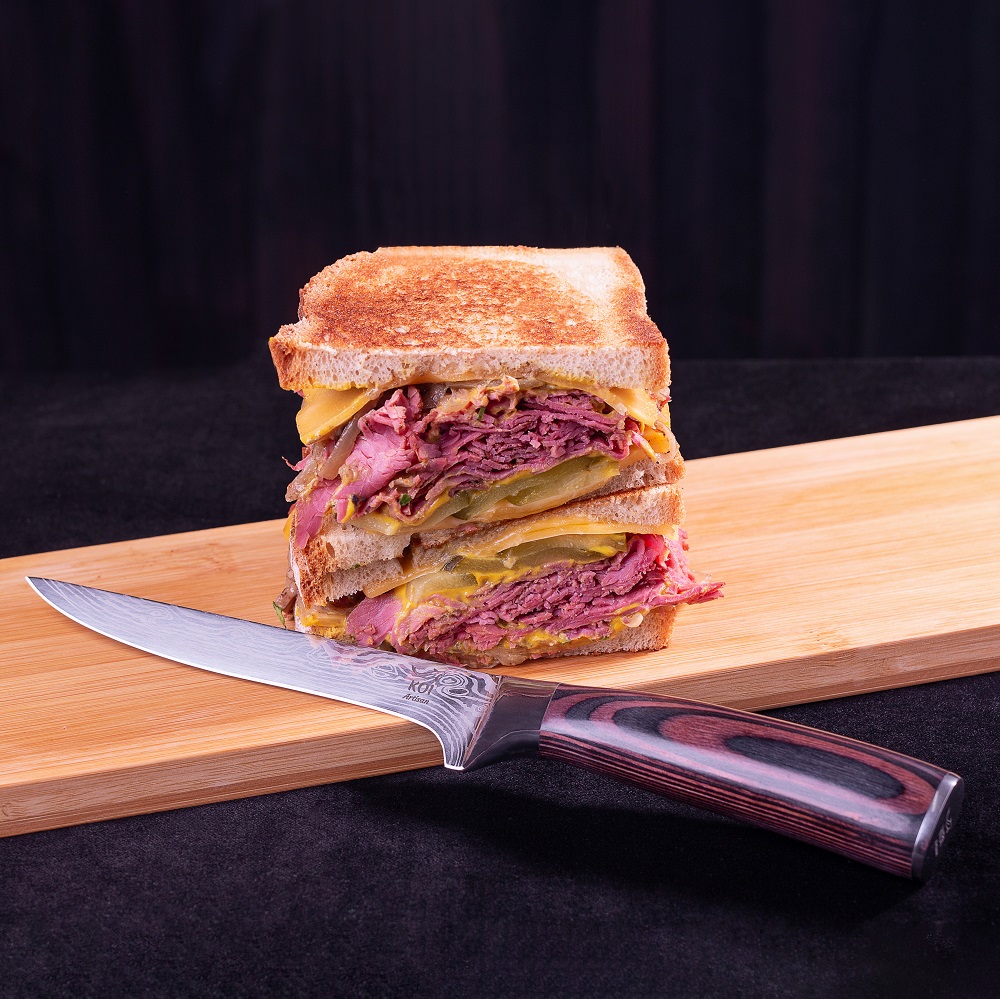
Uses Of Filleting Knife You Never Knew
Some of the most surprising uses of a fillet knife that you never knew about are explained below. We hope that after reading this document, you will want to learn more about knife use.
Filleting Meat With More Precision
For various dishes, you’ll need neatly sliced boneless and chicken breast fillets. For the chicken pieces, a fillet knife makes a neat and elegant centre cut. Using the long bevel, you can easily remove the fat from the meat as well.
To make it look bigger, cut it, produce a thin fillet, eliminate fat, or simply open it up. For cutting and slicing meat, this knife is all you’ll need.
The fillet knife is also useful for cutting, slicing, and peeling fruits and vegetables. It is not only the perfect choice for removing pith or slicing small slices for your fruits and vegetable salads, but it can also be used to form rosettes to add a touch of elegance to your platters.
This knife can also be used to cut maize and peel other citrus fruits and vegetables, such as oranges, avocados, potatoes, and beets.
Decorate Your Salads
As someone who appreciates beauty, art, and aesthetics, you’ll want your dishes to be as well-decorated as the rest of your home. A fillet knife can help you make a good first impression.
Tomatoes, carrots, radishes, and cucumber can be used to make elaborate and artistic salad designs.
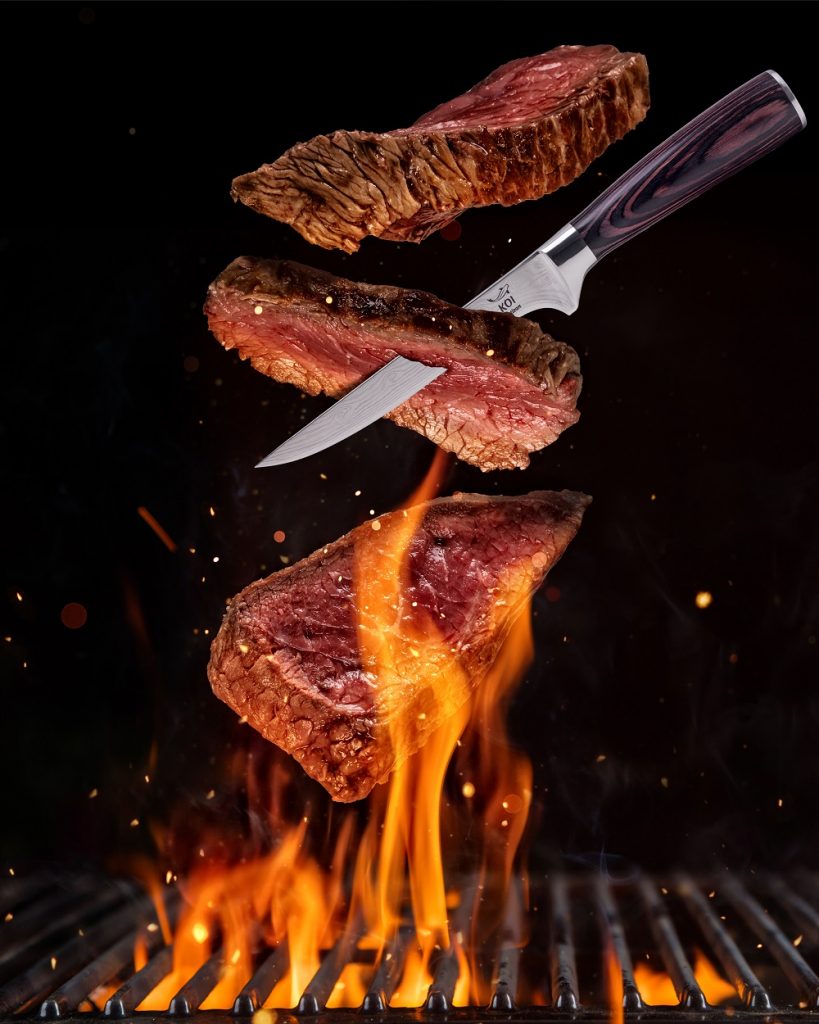
Clean Fish
Cleaning fish is the primary and most typical application for this knife. You can quickly remove the fish skin and clean the fish from the inside out with this knife, which is specifically designed for fish cleaning and slicing.
This knife has the ability to reach deep into the fish’s bone, allowing all of the superfluous organs to be removed completely.
Handles
Filleting a fish can be a difficult task. This poses some risks, as a slippery knife impairs a chef’s control, which is something you don’t want while working with a razor-sharp blade. As a result, the type of handle you select can be critical.
Handles are divided into four categories:
Wooden
Plastic
Rubber
Pitted metal
The following table compares the benefits and drawbacks of each material:
| Wooden | Plastic | Rubber | Pitted metal | |
| Grip | Vulnerable and prone to getting slippery | Although less slick than wood, it is nonetheless a problem. | Holds firm in the hand with the least chance of slippage | Pitted surface does impart some grip, though not as secure as rubber |
| Smell | Low quality wooden handles can soak up the smell of fish over time | Less likely than wood to soak up smells, though certain odours can be retained in the seams | Can retain some odour, though lack of seams makes knife easier to clean | Retains no odour, easy to clean |
| Colour coding | Difficult to colour code | Can be produced in different colours to indicate if they should only be used for raw fish | Can be produced in different colours to indicate if they should only be used for raw fish | Less likely to come with colour coding |
Expert Tips
Fillet knives are available in sizes ranging from 10cm to 23cm, depending on the type of fish you’re filleting. Longer blades are better for filleting larger fish like salmon, but a 20cm blade will fillet the typical size fish.
Purchase a set of fish tweezers and scissors to remove the fish’s pin bones and fins.
Fillet knives can be used to cut both fresh and saltwater fish, however they aren’t typically used to make sushi; instead, sushi or sashimi knives are utilised.
Most chefs learn how to fillet fish early in their careers, but it’s a talent that always improves with practise. With such a wide variety of fish to choose from, it’s easy to fall out of the habit of filleting and preparing specific fish. The prompts below will help you brush up on your filleting skills.
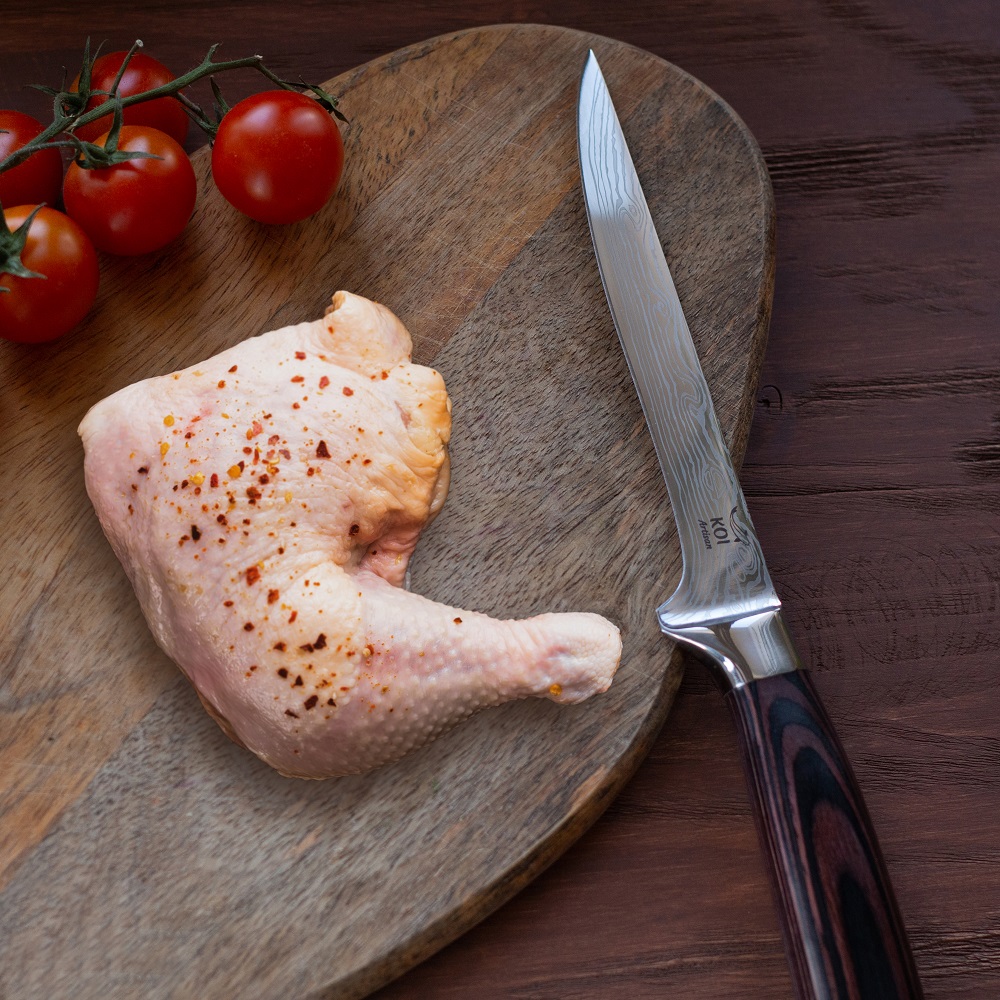
How to sharpen a filleting knife
Due to their odd shape and flexible blade, filleting knives can be difficult to sharpen. The three major ways for sharpening a filleting knife are the same as for sharpening any other kitchen knife:
Sharpener for the tabletop
Whetstone
Wheel for grinding
However, due to the more sensitive nature of many filleting knives, both tabletop sharpeners and grinding wheels will likely to remove a significant amount of the material that makes up the blades, thereby lowering the knife’s lifespan.
Sharpening your KOI Artisan filleting knife using a whet stone is advised. This gives you more control over your sharpening and prevents you from losing too much blade material. Sharpening and honing can both be done with some steels. However, attaining the level of sharpness required for filleting a fish might be challenging at times.
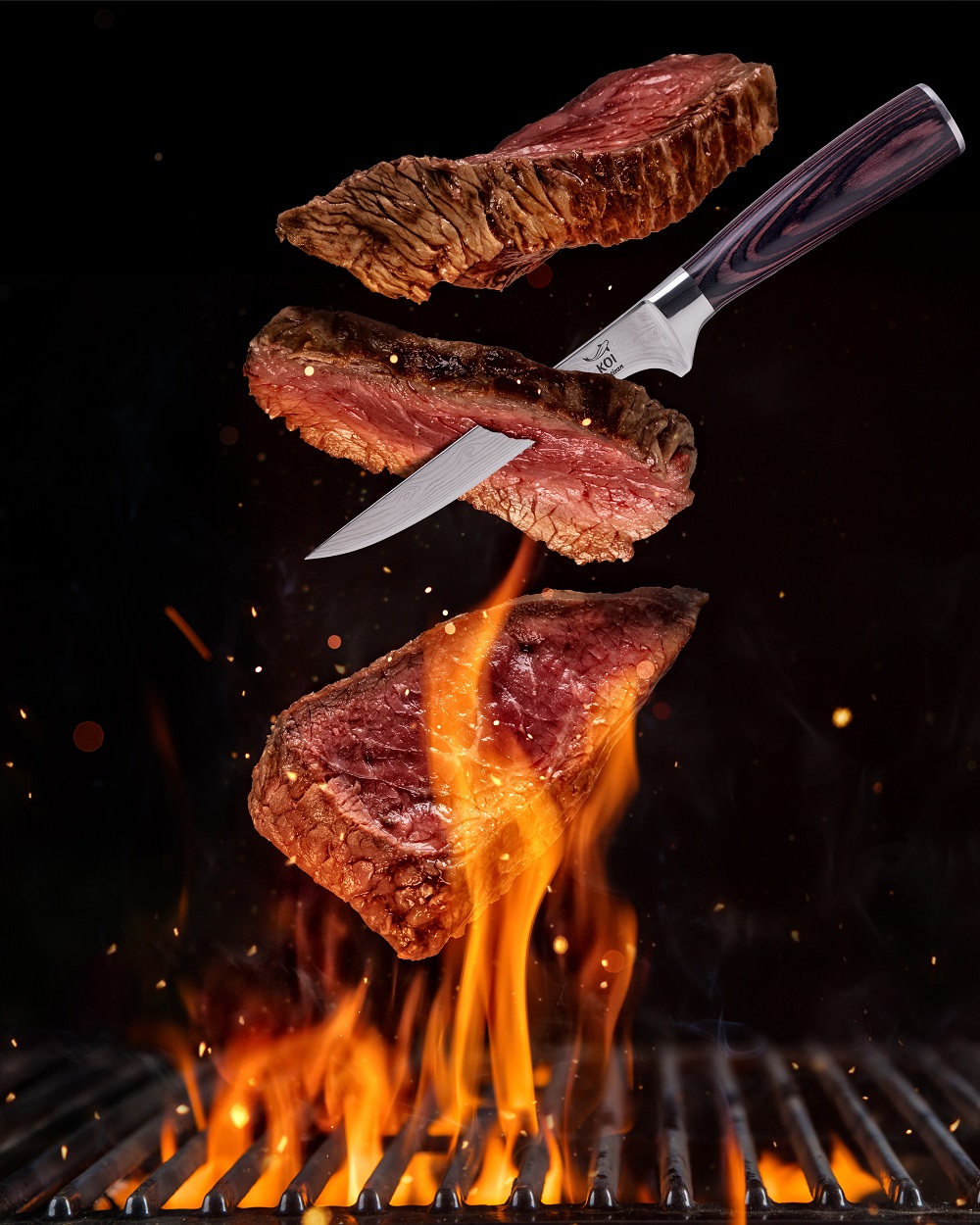
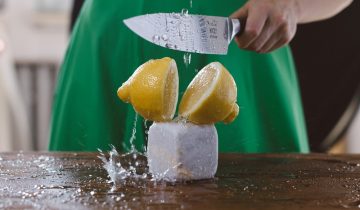

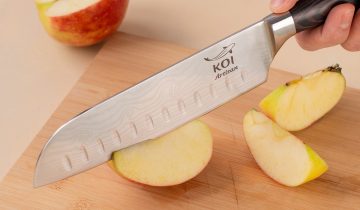
 No products in the cart.
No products in the cart.